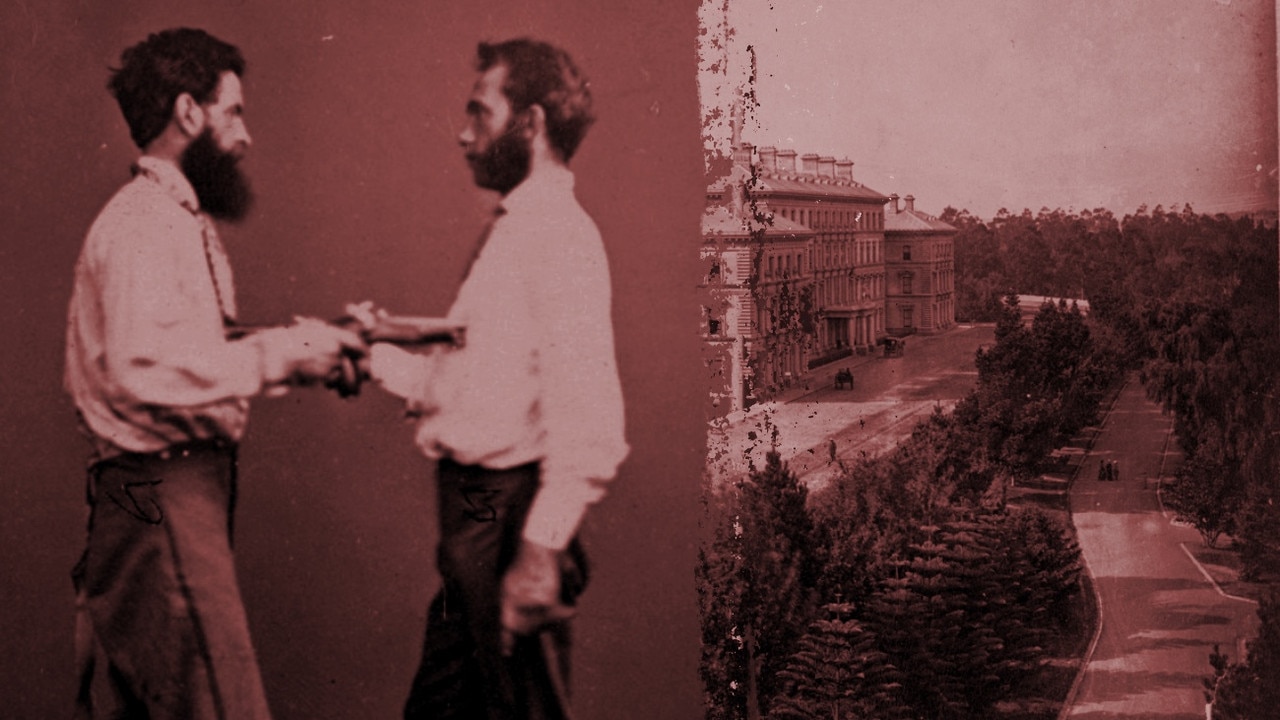Murder in Melbourne: The 1924 massacre in the Botanic Gardens
FAMILIES ran in terror on a summer’s night when a man opened fire in the Melbourne Botanic Gardens. It’s a long-forgotten case that terrified our city and sparked a mass manhunt.

- What the early Melburnians ate
- The changing faces of Melbourne
- Australian bushrangers: A short and bloody history
IT was a sunny, summer afternoon on the 23rd of January 1924, and families were lying on the grass having picnics and strolling through the Melbourne Botanic Gardens.
That afternoon Norman Alfred List entered a gun shop in Melbourne’s CBD and purchased a .44 rifle, which was wrapped in brown paper.
He told the attendant at the gun shop he was going hunting for kangaroos, paid his £7 and left.
“One of the most sensational tragedies ever known in Melbourne occurred about half-past 6 o’clock last evening. A madman, armed with a rifle, shot 5 persons who were walking or sitting in the Botanic Gardens near Anderson street,” The Argus newspaper, January 24, 1924.
He then went to another gun shop, this time buying a box of cartridges.
By 4.30pm, List was armed and ready to carry out a crime that spread fear and panic through Melbourne.
He hopped on a cable tram carrying the parcel containing the gun and got off at the botanic gardens, entering through gate D.
It was now around 6.30pm and he crawled into the bushes and lay in wait.

Hundreds of people had been in the gardens that day.
Many were finishing up their reading and picnics and rounding up the children to make the journey home.
Among them was Frederick William McIlwaine who was reclining on his arm while sitting under a cypress tree on the eastern lawn, and Mrs Eugene Strohhaker and her three children enjoying a meal with Mrs Marie Parry and her 11-month adopted daughter.
Advancing from behind the trees, List saw Mrs Strohhaker in the distance crocheting on the lawn and fired a shot killing her instantly while her children were washing under a tap nearby.
He then fired at Mrs Parry, the bullet hitting her in the jaw while she sat on a seat reading a book.


He then moved east towards gate C, and crouched behind some trees.
Miriam Podbury, 35, was reading a book when a bullet passed through her neck and she bled to death, and then another hit Frederick McIlwraine through the chest.
List then crawled behind a flower bed and took aim at Mrs Maud Moxham who was with her husband. She spotted List and screamed and managed to dodge the bullets, but her husband was hit in the back and hand and died from his injuries on January 27.
The sound of gunshots brought people running from across the gardens and soon List disappeared into bushes and jumped the fence, slipping away down Anderson Street.
The massacre was over in four minutes.

The aftermath reported in The Argus newspaper described the bloody scene on the lawns of the gardens.
“The scene there was a pitiable one. A man seriously wounded was lying on the ground, surrounded by his horror-struck children.”
“Some distance away a man and a woman, apparently dead, were lying with their faces buried in the grass. They were surrounded with blood.”
By 9.30pm there were around 150 police on the scene and the biggest manhunt in the city’s history was underway.
There was no motive and few witnesses, but police found the rifle in the bushes and traced it back to the CBD gun shop.
“The scene there was a pitiable one. A man seriously wounded was lying on the ground, surrounded by his horror-struck children.”
Within 48-hours they released a description of List: “Age 31 years, looks about 26 or 27 years; 5 feet 2 inches in height of medium build, good shoulders, small at the waist, high cheekbones, a large number of teeth in upper and lower jaws crowned and filled with gold.”
Testing the rifle later, police found it had jammed which possibly saved more people from being killed.
The city of Melbourne was gripped by the case, and people were terrified List would go on another shooting spree.
There were reports he had been spotted right across the city from Mornington to Kensington, and police were chasing up every lead and trying to keep the public calm.

Then on February 1, List’s body was found with his wrists slashed at Deep Creek, near Pakenham. The search was over.
The coroner’s report concluded: “List was the man who bought the rifle, and who shot five persons in cold blood”.


